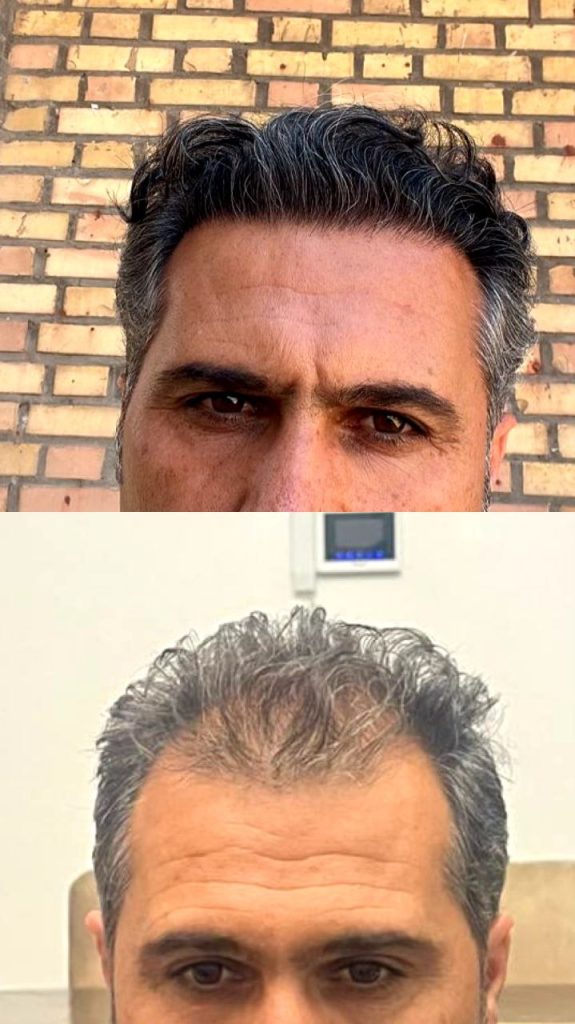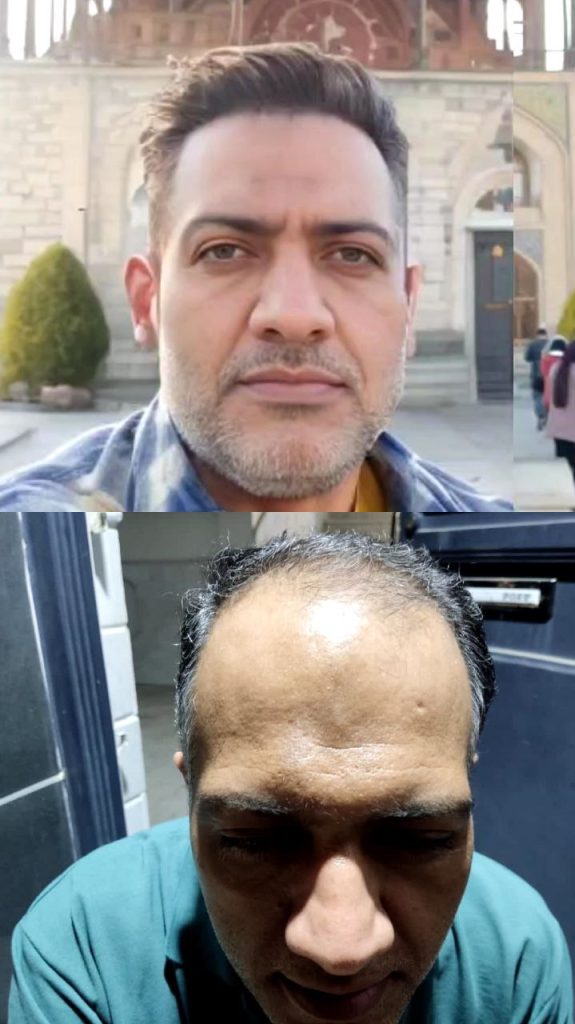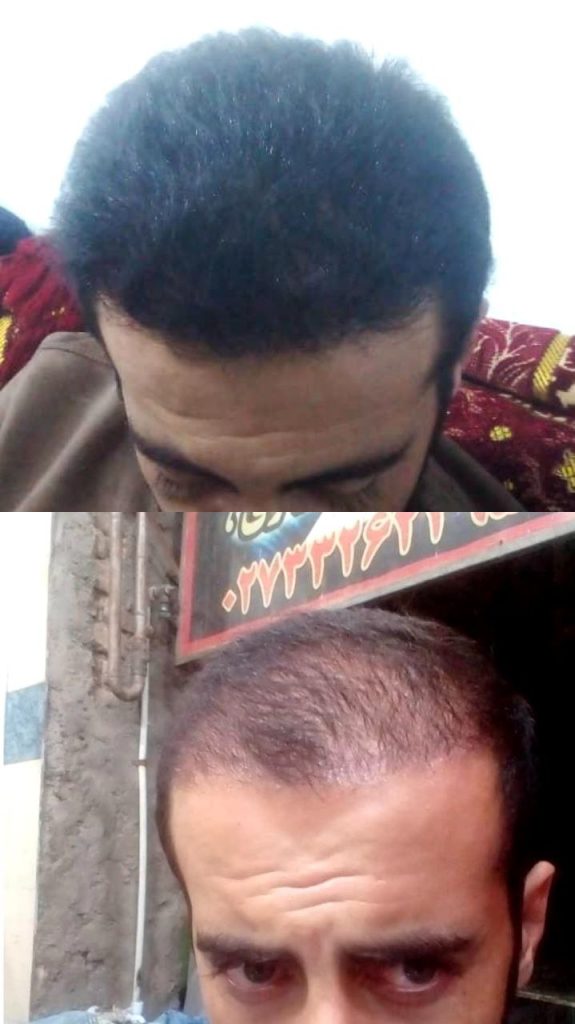Hair transplant services
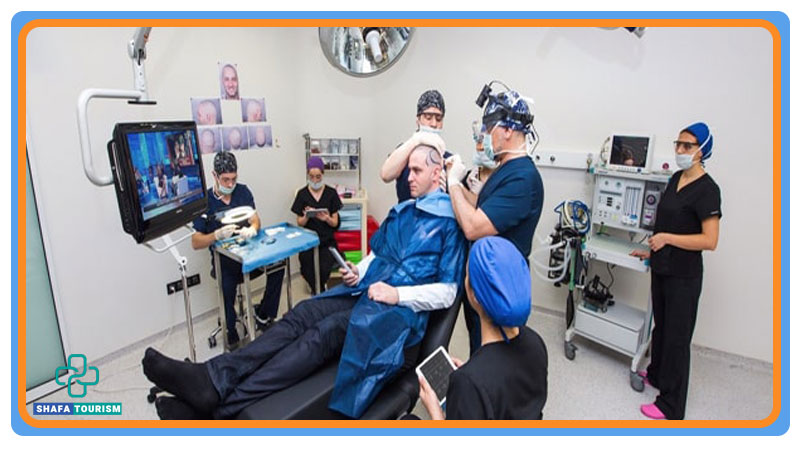
Hair Transplant in Iran
Are you struggling with hair loss and seeking a reliable solution? At ShafaTourism, we understand the emotional and psychological impact of hair loss and offer a transformative solution through our expert services of hair transplant in Iran. Iran has emerged as a leading destination for hair transplantation, thanks to its advanced medical technology and highly skilled surgeons. The increasing number of clinics in Iran has made it a popular choice for those seeking quality hair restoration at an affordable price. However, with so many options, finding the best clinic can be challenging.
At ShafaTourism, we guide you to the top clinics that boast experienced professionals, cutting-edge technology, and a proven track record in hair transplantation. We pride ourselves on our exceptional success rates and personalized care. Choosing the right method of hair transplantation is crucial, and our experts will help you select the best approach tailored to your needs. Trust ShafaTourism to restore your hair and confidence.
Services hair transplant
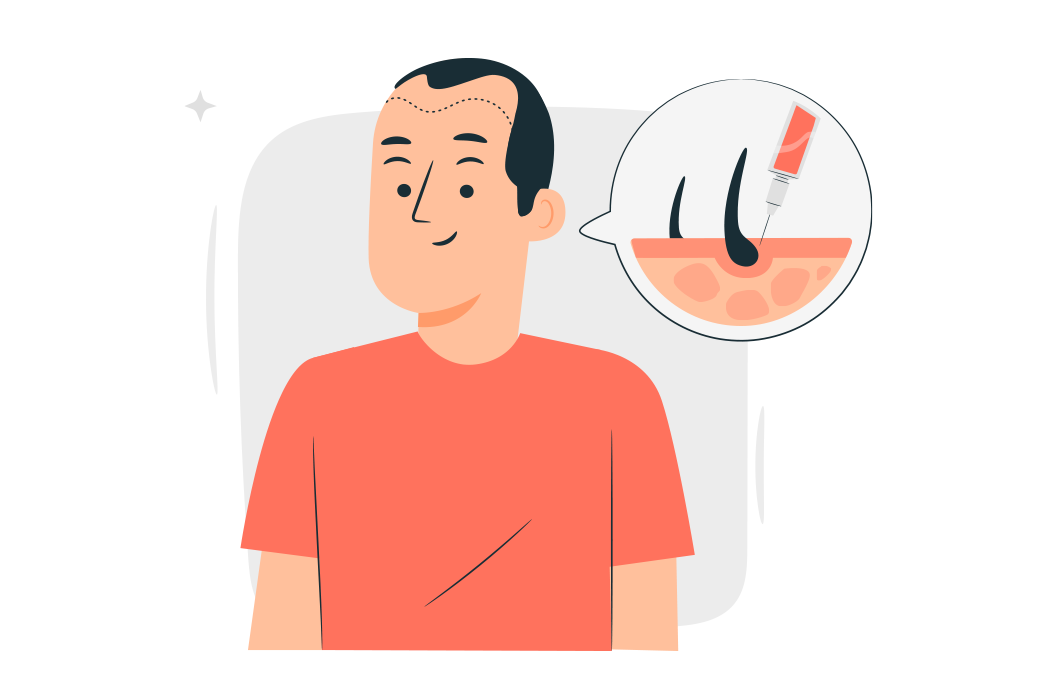
hair transplant

Eyebrow transplantation

beard planting
Bronze package
-
3 star hotel
-
Leader
-
Transfer
-
Ticket
-
SIM card and internet
-
The turn of the treatment center
-
Visa
-
Translator
Silver package
-
4 star hotel
-
Leader
-
Transfer
-
Ticket
-
SIM card and internet
-
The turn of the treatment center
-
Visa
-
Translator
Gold package
-
5 star hotel
-
Leader
-
Transfer
-
Ticket
-
SIM card and internet
-
The turn of the treatment center
-
Visa
-
Translator
Compare prices
hair transplant
Eyebrow transplantation
beard planting
What is Hair Transplant in Iran?
Hair plantation in Iran involves transferring hair follicles from a donor site, typically the back or sides of the head, to balding or thinning areas, such as the front and crown. This procedure is designed to enhance facial attractiveness by restoring a fuller, natural-looking hairline. There are various types of hair transplants, including Follicular Unit Extraction (FUE) and Direct Hair Implantation (DHI), each offering unique benefits. The continuous advancements in medical science have significantly improved the techniques and outcomes of hair transplant procedures, making them more effective and less invasive.
Background of Hair plant in Iran
Hair transplant procedures have evolved significantly over the years, starting from the early days of hair plugs to the sophisticated methods used today. The development of techniques like FUE and DHI has revolutionized the field, offering patients minimally invasive options with natural-looking results. Iran, with its rich medical expertise and innovative practices, has become a global hub for hair transplant procedures. ShafaTourism takes pride in its role as a facilitator, connecting foreign patients with the best hospitals and clinics in Iran for hair transplant services. We serve as a trusted intermediary, ensuring that medical tourists are attracted, received, and treated in top-notch facilities that meet international standards.
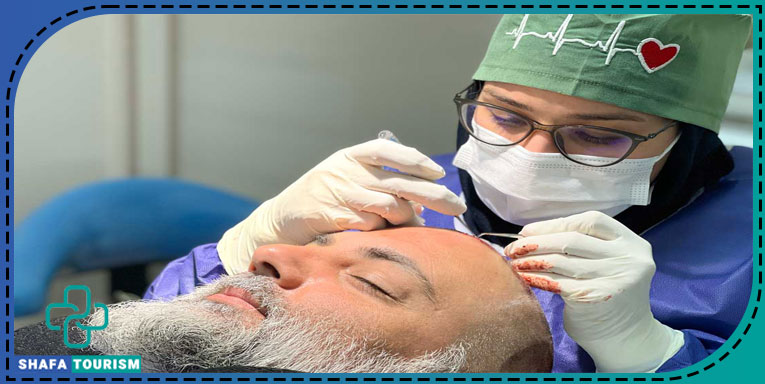
Causes of Hair Loss
Understanding the root cause of hair loss is crucial for effective treatment. At ShafaTourism, we guide you to conduct comprehensive tests and where to do them, including B12, T4, T3, TSH, FSH, LH, testosterone, DHEA-S, and DHT to diagnose the underlying issues.
Types of Hair Loss Needing Hair Operation in Iran
Diffuse Hair Loss:
- Telogen Effluvium
- Anagen Effluvium
Local Hair Loss:
- Androgenic Hair Loss (Male and Female Pattern Hair Loss)
- Alopecia Areata
- Trichotillomania
- Alopecia Caused by Traction
- Fungal Infections
- Skin Diseases (e.g., psoriasis)
- Cicatricial Hair Loss
Hair Loss Due to Illness:
- Inappropriate Feeding
- Improper Use of Chemicals
- Hormonal Imbalance (e.g., PCOS)
- Scalp Diseases (e.g., eczema)
- Over-Styling the Hair
- Thyroid Disorders
- Lupus Disease
- Hair Loss After Surgery
Hair Loss Due to Medical Treatments
Certain medications and treatments can lead to hair loss as a side effect. Chemotherapy is the most well-known example, but other treatments like radiation therapy, certain prescription medications, and even high doses of vitamin A can contribute to hair loss.
By addressing the specific cause of hair loss, ShafaTourism provides targeted treatments to help restore your hair and confidence.
Types and Methods of Hair Graft in Iran
Hair transplant techniques in Iran have evolved significantly, providing patients with various options for natural and lasting results. At Shafa Tourism, we offer a range of methods tailored to meet individual needs:
- Follicular Unit Transplantation (FUT): Involves removing a strip of scalp from the donor area and implanting the divided follicular units.
- Follicular Unit Extraction (FUE): Extracts individual follicles using a punch tool and transplants them to the balding regions.
- Bio Enhanced Follicular Unit Extraction (SUT): An advanced FUE using automated tools and bio-enhancement for improved follicle viability.
- Direct Hair Implantation (DHI): Extracted follicles are directly implanted using a specialized tool, offering greater control.
- Body Hair Transplant (BHT): Uses hair follicles from the body when scalp donor hair is insufficient.
- Follicular Isolation Technique (FIT) & FUE Combination: Combines FIT’s precision in isolating follicular units with FUE’s minimally invasive extraction.
In the clinics that ShafaTourism works with, skilled surgeons assess each patient’s unique needs and recommend the most suitable hair transplant method to ensure optimal results. Whether you opt for the traditional FUT or the advanced DHI, our goal is to provide you with a natural-looking, full head of hair.

Consultation of Hair Operation in Iran
In recent years, advancements in hair transplant techniques have significantly minimized the complications and recovery period associated with the procedure. At ShafaTourism, we emphasize the importance of thorough consultations to ensure that our patients receive the most suitable and effective treatment and hair plantation in Iran for their hair loss issues.
Selecting the appropriate hair transplant method is crucial for achieving the best results. Different methods cater to various types of hair loss and individual needs. Factors such as the extent of hair loss, donor hair availability, and desired outcomes must be considered. Consulting with experienced professionals is vital to make the right choice. The experts at Shafa Tourism will guide you through the available options, ensuring you receive personalized advice and achieve optimal results.
In What Cases is Hair Transplantation Not Recommended?
While hair transplantation can be an effective solution for many, there are specific cases where it might not be suitable. Non-surgical treatments, such as medications or topical applications, may be more appropriate for the following individuals:
- Women with Hair Loss in a Large Part of the Scalp
- People Without Sufficient Hair Density in the Donor Area
- People with Keloid Scars
- People Who Have Hair Loss Due to Chemotherapy Drugs
Choosing the right hair transplant method involves a detailed diagnosis and consultation. We help the specialist assess your hair loss pattern, scalp condition, and overall health to determine the most effective treatment plan tailored to your needs.
During your consultation, we address all your concerns to ensure you have a clear understanding of the procedure and its outcomes. Here are some common questions we answer:
- Are the results you are looking for reasonable?
- What should be done if the result of hair transplant is not desired?
- Which hair transplant method is more suitable for you?
- How muchdoeshair transplant cost in Iran?
- Is there a possibility of complications after surgery?
- What is the recovery period like and what care will be needed?
At ShafaTourism, we are dedicated to providing exceptional hair transplant services with personalized care. Trust us to guide you through your hair restoration journey with professionalism and expertise.
Hair Transplant in Iran: For Whom is it Suitable?
Hair transplant procedures are ideal for individuals with stable hair loss patterns, good general health, and realistic expectations. However, certain conditions may make hair transplantation unsuitable:
- Severe anxiety and depression
- Obsessive hair plucking disorders (trichotillomania)
- Autoimmune diseases like lupus, lichen planus, or severe psoriasis
- Severe diabetes
- Blood coagulation disorders and infectious diseases (e.g., AIDS, syphilis)
- Insufficient donor hair
- Undergoing chemotherapy and radiation therapy
- Diffuse hair loss across the entire scalp (common in some women)
- Prone to keloid scars
- Pregnant and lactating women
- Hormonal disorders like polycystic ovary syndrome (PCOS) and thyroid issues
- Unrealistic expectations
- Under 30 years old, due to hormonal instability
Hair transplantation in Iran is particularly recommended for those who seek both medical treatment and the opportunity to explore and enjoy the country’s natural beauty. Shafatourism offers high-quality hair transplant services at a lower cost in Iran compared to many other countries, making it an attractive option for medical tourists looking for effective treatment combined with an enriching travel experience.
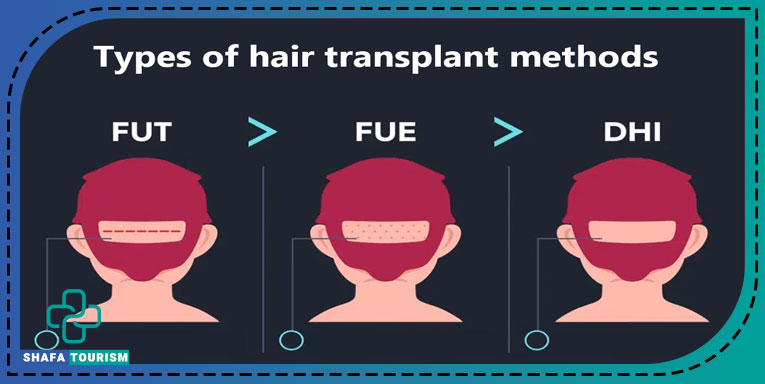
How Long Does the Hair Transplant Procedure Take?
The duration of a hair transplant procedure varies depending on the method used and the extent of the transplant. Typically, it takes between 4 to 8 hours. More complex cases may require multiple sessions.
Hair Transplant Steps
- Harvesting or Extraction of Follicles
Local Anesthetic Injection: To numb the donor and recipient areas.
Removal of Healthy Follicles from the Hair Bank Area:
- Manually: Using specialized tools for precision.
- Using a Punch and Other Tools: For minimally invasive extraction.
- In a Strip: Involves removing a strip of scalp in FUT method.
- Preparation and Maintenance of Follicles
Types of Hair Follicles: Single, double, or multiple hair follicles are separated and preserved for implantation.
- Implantation of Grafts
Follicles are carefully implanted into the recipient area to create a natural hairline and density.
Medical Tourism Steps with Shafa Tourism
- Visa Assistance: Helping patients obtain the necessary visas for travel to Iran.
- Travel Arrangements: Coordinating flights and transportation to ensure a smooth journey.
- Accommodation: Arranging comfortable stays in close proximity to the clinic.
- Transit and Transfers: Providing airport pick-up and local transportation.
- Tourism Opportunities: Offering guided tours and travel experiences to explore Iran’s natural beauty and cultural heritage.
Care Before Hair Transplantation in Iran
Necessary Tests Before Hair Transplantation
- CBC: Complete blood count.
- PT, PTT: Prothrombin time and activated partial thromboplastin time.
- BT, CT: Bleeding time and clotting time.
- HIV, HBS, HCV: Tests for HIV, hepatitis B, and hepatitis C.
Basic Steps Before Hair Transplantation
- Abstaining from Blood Thinners for 10 Days
- Not Consuming Alcohol and Tobacco for 14 Days
- Showering Before Surgery
- Avoid Using Styling Materials: Such as tuft and gel.
- Light Meal the Night Before Surgery
Care After Hair Transplantation
Post-Transplant Medications and Care
- Antibiotics: Prevent infections.
- Anti-Inflammatories: Reduce swelling.
- Antihistamines: Control itching.
- Pain Relief: Includes sleeping pills if needed.
- Vitamin C: Promotes healing.
- Specialized Serums and Shampoos: Maintain scalp hygiene.
- Minoxidil: Enhances hair growth and success rate.
Healing and Follow-Up
- Follow all post-operative care instructions.
- Adhere to medication schedules.
- Attend follow-up appointments.
Hair Mesotherapy
- Sessions: Last about 40 minutes.
- PRP Therapy: Often combined with mesotherapy.
- Benefits: Improved hair growth and follicle health.
- Side Effects: Minimal, may include mild pain and swelling.
Importance of Medications
- Minimize complications.
- Increase treatment success.
- Prevent adverse effects.
- Failure to adhere can lead to complications and reduced success rates.
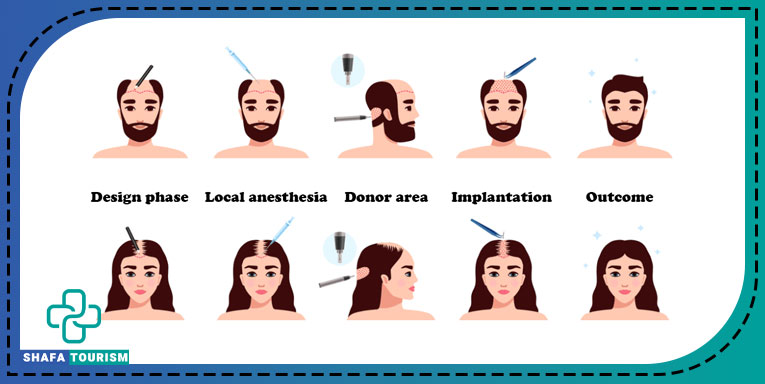
The Best Clinic for Hair Transplant in Iran
Choosing the best hair transplant clinic in Iran is essential for a successful outcome. At Shafa Tourism, we ensure you make an informed decision by working only with top-tier clinics. Here’s what to consider:
- Clean and Hygienic Environment: Maintains stringent hygiene protocols.
- Official License from the Ministry of Health: Accredited and compliant with medical standards.
- Counseling and Support Sessions: Comprehensive pre- and post-operative consultations.
- State-of-the-Art Equipment: Utilizes the latest technology for precision.
- Work History and Portfolio: Offers a variety of medical services and has positive client testimonials.
ShafaTourism collaborates exclusively with the best clinics, guaranteeing high standards of care and exceptional results.
How to Find a Good Clinic for Hair Transplant in Iran?
To find a reputable clinic, consider the following steps:
- Check the Resume of Hair Transplant Center: Investigate the clinic’s background, including their experience, specialization, and success stories.
- Inquiries from Other Clinic Clients: Speaking with former patients can provide firsthand insights into the clinic’s services and outcomes.
- Checking the Opinions of Clients: Online reviews and ratings can offer additional perspectives on the clinic’s reputation and quality of care.
ShafaTourism identifies the best doctors and clinics. You can consult with us to determine which doctor is most suitable for your needs.
What is the Ability of the Best Clinic for Hair Operation in Iran?
A top-tier clinic should demonstrate exceptional capabilities, including:
- Hair Transplant Without Surgery: Offering non-surgical options such as FUE and DHI for minimal invasiveness and quicker recovery.
- The Highest Density: Achieving high hair density and natural-looking results.
- The Presence of the Best Experts in the Country: Employing experienced and highly qualified surgeons and staff.
Features of the Best Specialist and Doctor for Hair Graft in Iran
The expertise of the doctor performing the transplant is critical. Look for the following qualifications:
- Having a Specialized Certificate in the Field of Hair plantation in Iran: Certification from recognized medical institutions.
- Having a Long History and Experience: Extensive experience in performing various hair transplant techniques.
- Familiarity and Mastery of Different Methods of Hair Transplantation: Proficiency in the latest methods and technologies.
- Possessing Professional Ethics to Support Clients: Commitment to patient care and ethical practices.
- Holding a Consultation Meeting with the Client: Providing personalized consultations to discuss expectations and treatment plans.
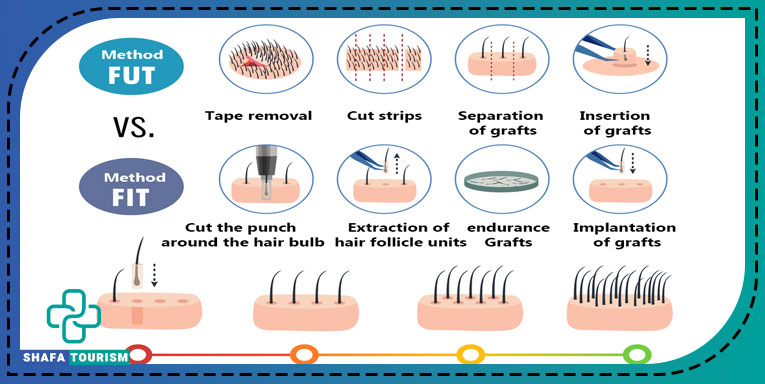
The Largest Clinic for Hair plantation in Iran
At ShafaTourism, we collaborate with some of the largest and most renowned hair transplant clinics in Iran. These clinics are equipped with advanced technology and staffed by highly skilled professionals dedicated to achieving the best possible outcomes for our patients.
The Best Doctor and Staff of Hair Transplant in Iran
Our affiliated clinics boast some of the best doctors and medical staff in the field. They are committed to continuous learning and staying updated with the latest advancements in hair transplant techniques.
At ShafaTourism, we ensure that you receive the highest quality care and support throughout your hair transplant journey. Trust us to connect you with the best clinics and specialists in Iran, providing you with exceptional results and a seamless experience.
Last words
At ShafaTourism, we are committed to providing exceptional hair transplant services in Iran. Our team of experts, state-of-the-art facilities, and comprehensive support ensure that you receive the best possible care and achieve outstanding results. Trust us to guide you through every step of your hair restoration journey.
For more information or to schedule a consultation, contact ShafaTourism today. We are here to help you achieve the hair of your dreams.
FAQs
The main difference lies in the pattern and cause of hair loss. Women typically experience diffuse thinning, while men often have localized balding. clinics that we work with, tailor the approach to address these specific patterns effectively.
Hair transplant procedures in Iran are performed under local anesthesia, minimizing discomfort. Most patients report minimal pain during and after the procedure.
ShafaTourism works with clinics and professionals who adhere to strict health protocols, including sterilization of equipment, maintaining a clean environment, and following guidelines set by health authorities to ensure patient safety.
While there is no strict age limit, candidates are generally evaluated based on their overall health, hair loss pattern, and expectations. Typically, individuals between the ages of 20 and 50 are ideal candidates.
Hair transplant results are typically permanent, as the transplanted hair follicles are resistant to the hormones that cause hair loss. However, natural aging and genetic factors can influence hair density over time.
Initial hair growth can be seen within 3 to 4 months post-transplant. Full results are usually visible between 9 to 12 months, with continuous improvement in hair density and quality.
Candidates under 20 may not be ideal due to ongoing hair loss progression. Those over 50 can benefit from transplantation if they have a sufficient donor area and realistic expectations.
Advancements in medical technology and a better understanding of hair loss mechanisms have led to the development of new hair transplant methods. These methods aim to improve results, minimize invasiveness, and reduce recovery time.

